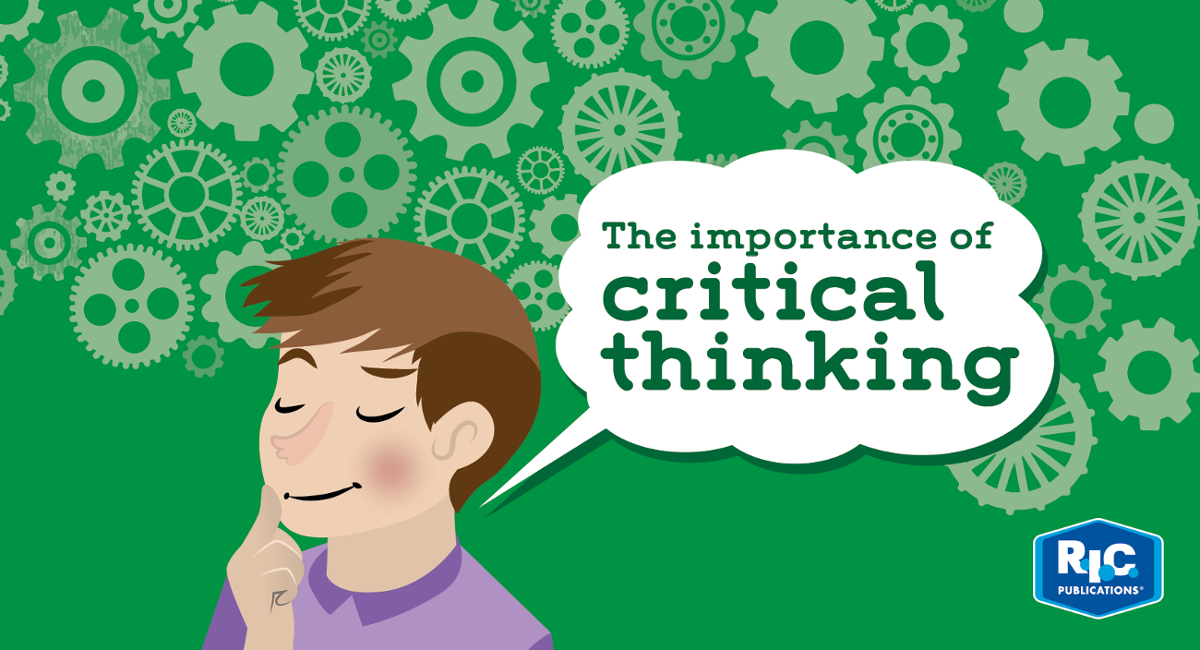- Wednesday 29 May 2019
- 0 Comments
For years theorists have studied the importance of developing critical thinking skills in students to create confident and independent citizens of the world— people who can hypothesise about, analyse, create and evaluate the world they live in. However, while many teachers agree on the importance of developing these skills, time restraints and a push to teach content often impacts the time spent developing critical thinkers.
Critical thinking involves the ability to gather information, process it, evaluate it using evidence and apply the information to new situations. Developing these skills is a time consuming and progressive journey which is enhanced through immersion in opportunities to practise and discussions.
The Australian Curriculum acknowledges the importance of developing critical thinkers through the inclusion of the general capability—critical and creative thinking. ‘The general capabilities comprise an integrated and interconnected set of knowledge, skills, behaviours and dispositions that apply across subject-based content and equip students to be lifelong learners, able to operate with confidence in a complex, information-rich, globalised world.’
Both Linda Elder and Richard Paul from the Centre for Critical Thinking explain that critical thinking is a stage theory in which students progress from the unreflective thinker to the accomplished thinker in a series of six stages. During each stage, students must demonstrate they can transfer their critical thinking skills into all aspects of their lives. For this reason, progression through stages is time-consuming and requires a multitude of practise opportunities.
Other stage theories, including Bloom’s Taxonomy of the Cognitive Domain (Bloom et al. 1956) highlight the importance of progressing through hierarchical stages to develop higher order thinking skills. Bloom et al. (1956) believe that simply recalling facts is the lowest level of thinking, progressing into comprehending, applying and analysing as the levels of thinking become more complex. Higher order thinking occurs when students can evaluate the quality of information presented and use their knowledge to create and/or improve an item or a situation.
While adaptations have been made to Bloom's Taxonomy, the hierarchical nature of thinking still remains consistent. It is also imperative to note that students will progress through the stages at different rates, as with all skill development.
'Education is not the learning of facts but training the mind to think' – Albert Einstein
So how can teachers promote critical thinking in the classroom?
- Oral language plays an important role in developing critical thinkers. Encouraging discussions where students question phenomena or points of view, justify their personal opinions using evidence, and use prior knowledge to find solutions or alternative methods, are vital. Providing students with opportunities to communicate with other students, teachers and school staff allows them to examine alternative points of view and ways of thinking about a topic.
- While critical thinking can be developed throughout all learning areas, some—such as Science and Design and technologies—provide greater opportunities to develop these skills through hands-on investigations.
Science naturally lends itself to developing critical thinkers as it requires students to hypothesise about a topic, analyse or test the information, provide evidence to prove or disprove the theory/idea and evaluate the evidence. It requires students to constantly question the world around them and seek alternative solutions to local, national or global issues. Conducting experiments and open-ended tasks creates engaging lessons where students can develop their higher order thinking skills.
Likewise, Design and technologies provides opportunities for students to use their prior knowledge to plan, create and evaluate a designed solution (a product or a service). Hands-on projects should be centred around an identified local, national or global issue/ need, such as planning and building a bird feeder for the local ranger. Students must use their lower order thinking skills to plan the project and higher-order thinking skills to create and evaluate the effectiveness of their designed product.
Lastly, encouraging cooperative learning provides additional opportunities for students to justify their point of view, explore other students' points of view and reason with their peers to find the most effective solution/ answer.
In summary, it is clear that developing students' critical thinking skills through oral discussions, hands-on investigations and cooperative learning activities is imperative and should be a priority in all schools to create critical thinkers of the future.
Differentiating for critical thinking
To develop students' critical thinking skills, teachers must differentiate activities to cater for various levels of cognitive processing. The two activities below demonstrate how this can be achieved and can be used by students of all ages across many learning areas. The examples have been provided based on a ‘properties of materials’ lesson.
Download this full blog as a PDF here.
Looking for resources to encourage your students’ thinking skills, then take a look at our new release Higher-order thinking skills here.
Have you any other great ideas on teaching critical thinking in the classroom?
We would love to hear about them in the comments below.
References:
- Australian Curriculum structure, viewed 8 December 2015, https://www.australiancurriculum.edu.au/f-10-curriculum/structure/
- L Elder & R Paul, Critical thinking development: A stage theory, The critical thinking community, viewed 8 December 2015, http://www.criticalthinking.org/pages/critical-thinking-development-a-stage-theory/483
- B Bloom, M Englehart, E Furst, W Hill & D Krathwohl, Taxonomy of educational objectives: The classification of educational goals, Handbook I: Cognitive domain, Longmans, Green, New York, Toronto, 1956, viewed 8 December 2015, http://www.edpsycinteractive.org/topics/cognition/bloom.html

